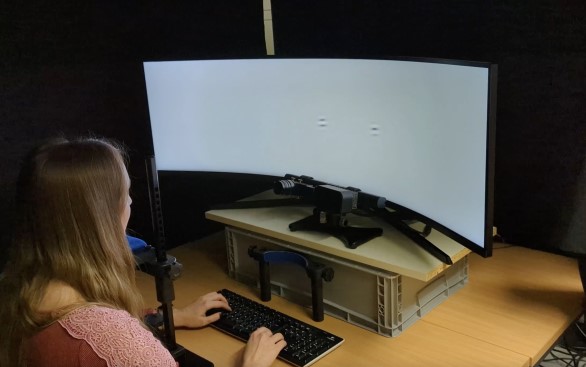Measuring Velocity Perception Regarding Stimulus Eccentricity
Presented at the ACM Symposium on Applied Perception (SAP), August 2024
Abstract
A major factor resulting in cybersickness is the feeling of self-motion experienced when viewing a moving scene in Virtual Reality (VR). Current research indicates that this effect is largely created by motion in the periphery. To discover why this is the case, we investigate the influence of temporal frequency and eccentricity of a stimulus on the magnitude of perceived velocity in the periphery. Based on the perception of two-dimensional stimuli on a wide field-of-view display, we build a model to predict the scaling factor by which the perceived velocity of visual patterns deviates from the physical velocity. Further, our exploratory findings indicate no impact of gaze type on the results, suggesting our model works for both fixation and smooth pursuit scenarios. In an additional pilot study in VR, we test the accuracy of the model to predict unnoticeable object motion adaptation in 3D virtual worlds and find positive indications for a similar effect.
Video Demonstration
BibTeX Citation
@inproceedings{scholz2024measuring,
title={Measuring Velocity Perception Regarding Stimulus Eccentricity},
author={Timon Scholz and Colin Groth and Susana Castillo and Martin Eisemann and Marcus Magnor},
booktitle={ACM Symposium on Applied Perception (SAP)},
pages={1--9},
year={2024},
month={August},
publisher={ACM}
}
